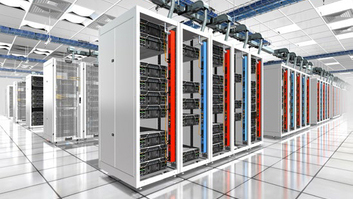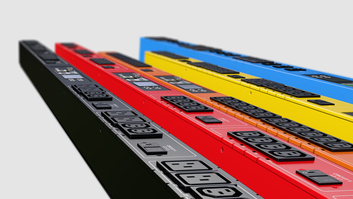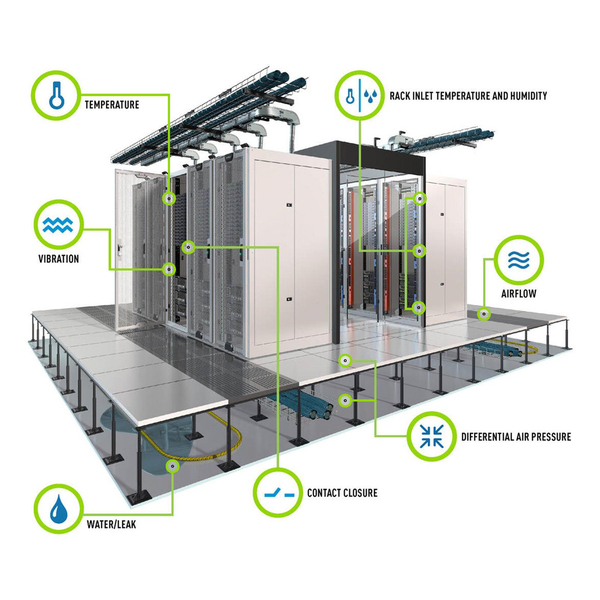
Colocation centre
Colocation centres must be designed with a clear philosophy in mind that prioritises reliability, efficiency, consistency and continuity. Designers have a crucial role to play in delivering continuity and world-class data centre service around the clock so the devices are secure and always available. This is best achieved by looking at all plans, decisions and safety concepts from the customer’s perspective.
Meeting expectations
Whether the client is a multinational company or a small local IT business, fast and efficient communication channels, flexibility, speed, and the willingness and ability to do everything necessary are evidence the client has made the right choice in terms of colocation centre.
Before deciding to place their IT equipment in a colocation data centre, customers often consider the following questions:
- Can the colocation centre cope with the present power density of the racks with a single current distributor on the rack? What about future needs?
- Can the colocation centre provide sufficient cooling for the power density and temperature requirements of the customer now and in the future?
- What kind of a remote service system does the colocation centre use and can a third party restart the equipment if necessary?
- Is it necessary to have regular access to the racks in the colocation centre, for example with IT configuration changes or repairs? If so, by whom? Would a rack-level asset management system be useful?
- Does the colocation centre offer data centre infrastructure management (DCIM) software as part of the service? If not, would a separate DCIM deployment help?
- What needs to be considered in terms of the security of IT resources, both physically and logically?
- How is actual energy consumption measured?

Electrification
In any colocation system, electricity is one of the biggest recurring costs. The power distribution unit (PDU) is literally the central part of a smart rack. By choosing the power distribution unit wisely, the number of power distribution units between the colocation service provider’s premises and the IT infrastructure can be minimised. This way the customer gets the highest possible level of security and network, as well as benefitting from the dual-based approach and being able to efficiently use all the electricity they pay for each month.
To determine the power needed, it is important to know the right form factor, the right number of sockets, and to have an application with the right features. You also need to consider whether 1 kW or more than 100 kW is needed, and DC or AC power.

The choice of the appropriate PDU for the selected colocation environment is essential to achieve operational availability and efficiency targets.
With remote metering and controlled power consumption, smart PDUs allow convenient remote start-up via an integrated web interface or simple network management protocol (SNMP). This way, customers always have access to their system-critical applications.
- Checking power consumption and/or energy reporting. Power supply monitoring at the rack level
- Property control, effective output control
- Rack access control, with IP camera
- Monitoring conditions: temperature, humidity, air pressure variations and floor-level water sensor, Dry contact measurement
- Remote power management and restart
- Smart load separation and capacity planning

Always up to date – and documented
When IT equipment is located in an off-site colocation centre, monitoring the temperature and humidity of the environment is an indispensable way to ensure and document the maximum performance, efficiency and availability of the hardware in the data centre.
It is impossible to overstate the importance of accurately monitoring environmental indicators. By logging environmental data and monitoring the trends in it, it is possible to determine whether the heating, ventilation and air conditioning (HVAC) systems in the data centre are working properly and whether the air circulation is sufficient to cope with the heat load of the IT equipment.
In addition, overloaded systems and racks can be identified. The intelligent PDUs from Server Technology and Raritan offer unprecedented levels of integrated functionality for environmental sensors. Placed in the IT rack, they are displayed on the PDU network interface and provide an accurate view of the data centre’s interior. The units also measure temperature, humidity, air pressure variations, floor humidity and the dryness of the contact.
Ensuring physical safety
Certain current distribution units support frame door access control so that, for example, external maintenance personnel can only access those racks in the colocation IT cage for which remote access has been granted. All rack operations are logged, making it easy to review operating history and ensure compliance.

It can be difficult for IT staff to monitor and manage a remote colocation data centre where the location of resources is constantly changing. Knowing where to place loads helps both the data centre owner and the customer to plan capacity, thus making the most efficient use of all resources. The asset management system allows the location of all rack-mounted equipment in the data centre to be determined for each device.
The most common difficulties in deploying the DCIM software tool are initially adding resources to the tool and then maintaining the DCIM database as systems are added, removed and moved around the data centre. The combination of asset management tools (AMT) and asset management systems (AMS) and a supported DCIM tool simplifies DCIM maintenance, both during the use of the data centre and as it changes over time.



